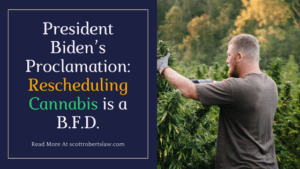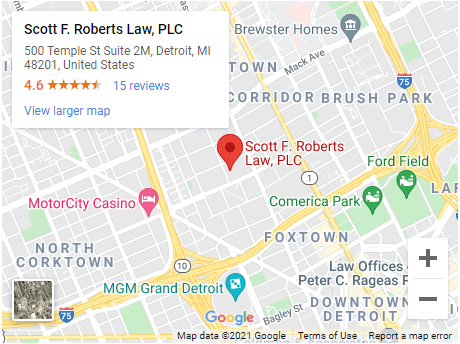As someone with strong connections to both dispensary owners as well as cannabis consumers, I often hear complaints about cannabis pricing in the current market. Consumers mistakenly believe that their MRTMA marijuana retailer, or in some causes their MMFLA provisioning center, is “ripping them off with these prices.” I can’t tell you how many times I’ve heard consumers complain that dispensaries are “greedy” because they are charging $60 for an eight of adult-use product, or selling ounces of premium medical flower for $300.
As a cannabis business attorney that represents more than a dozen state licensed provisioning centers and retailers, I also hear complaints about the high wholesale costs and how all of their supposed profits went to the IRS. I’ve also heard a few other dispensary owners complain about how their profits all went to their attorneys, though not with respect to my legal bill (hooray value-based billing!). And to be fair, I think some of this has to do with overstaffing and less than efficient operations. I was once in a well-known brand name dispensary and counted 11 total staff members onsite, compared to two total customers. It’s hard to be profitable with that many staff unless you are doing some serious volume.
Nonetheless, the truth is, Michigan dispensaries are not very profitable at the moment. In fact, many dispensaries that consumers claim are being greedy are actually losing money, meaning they are essentially subsidizing the consumer with lower pricing than they should otherwise be charging. This begs the question, why are dispensaries losing money with prices that many consumers believe are simply “too high”?
Putting aside the points mentioned above about operational efficiency and overpriced law firms, there are two main reasons for this—high wholesale costs and 280E. Let’s unpack why each of these factors forces provisioning centers and retailers to retail products for higher than what many consumers believe is “fair”.
High Wholesale Costs
As a dispensary, you buy wholesale products from MMFLA and / or MRTMA licensed growers and processors, mark up the price, and then sell to the consumer. That’s the business model. Now what do you do if you are forced to pay up to $5,000 for a pound of adult-use wholesale flower? Well, you have to mark up the price to at least cover your operating costs, then sell to the Michigan adult-use market. That means they are paying approximately $40 an eighth wholesale. Ideally, as a retailer, you want to have at least 50% margins, which if you were to apply it to this example, would be $80 an eight. Yikes.
The reason for the high wholesale price on the adult-use side is lack of supply. Many Michigan marijuana retailers brought tons (literally…) of caregiver product in through their grows hoping to take advantage of MRA’s policy that allows certain transfers of medical marijuana products over to the adult-use market. MRA, or the Marijuana Regulatory Agency, recently announced that caregiver products cannot cross over into the adult-use system. With a very limited amount of MRTMA licensed growers, and the need to sit on inventory from MMFLA licensed growers for 30 days before you can transfer part of that product over, it means there is simply not a lot of adult-use marijuana to go around. That’s why many adult-use dispensaries don’t offer price breaks above an eighth, or in some cases a gram. Those price breaks would eat away at their entire margin, not to mention they don’t have that much product to sell.
This is also why the prices for medical flower has dropped quite a bit recently. All that cheap caregiver product that flooded the system has to be sold. I’ve seen deals for $20 eighths, or quality flower priced below $200 an ounce. Not so coincidentally, I have also seen medical marijuana wholesale for $2,000 a pound. When the product is cheaper to buy wholesale, then a lot of those savings are passed on to the consumer.
What this means it that dispensaries are not being greedy. They are simply passing on the cost of their purchases to the consumer, and many of them subsidizing the consumer with margins low enough to ensure they don’t make a profit when all is said and done. The only solution for many dispensaries, other than waiting for the prices to eventually fall, is to vertically integrate.
280E
It’s safe to say most cannabis consumers don’t know what 280E is. It’s also safe to say that not only does every dispensary owner know about 280E, but that it’s also the bane of their existence. I’m not going to get into a thorough discussion of 280E in this post—you can read this article that goes into detail on how this affects dispensaries. But to make a long story short, dispensaries cannot take business deductions on the cost of their employees, rent, security, insurance, or pretty much anything else other than the wholesale costs to purchase and package marijuana.
Let’s use an example to illustrate. Let’s say John owns a dispensary. That dispensary does $1 Million in revenue, of which $500,000 goes to wholesale and packaging costs, $200,000 to staffing, and $200,000 to rent, insurance, attorneys, and other costs. You would think John just made $100,000. In fact, he didn’t—he actually lost money because he is paying taxes as if he made $500,000, not $100,000. Since his tax bill on the $500,000 exceeds the $100,000 he made on paper, he just made money on paper but in actuality lost money after paying taxes. Sucks to be John.
Putting It All Together
If you are a consumer and you read this article, hopefully you understand now that your local dispensary was not being “greedy” when they were charging $60 an eighth for adult-use product. These same dispensaries that you were saying are greedy are now selling $20 eighths on the medical side. So if you don’t like adult-use pricing, just get a medical card, it’s easy. I’m sure you’ve had back pain or something.
If you are a dispensary owner, you probably now know why I push nearly all of you guys to vertically integrate. The whole business model changes when you also own the grow facility that is charging the dispensary $5,000 a pound for adult-use flower. While your dispensary business would still not make much money, that’s OK, your grow is printing money at those wholesale prices. And if the wholesale prices start to drop, or rise, you are insulated in both scenarios. A higher wholesale means you make more profits on the grow, but a lower wholesale means you make more profits through the dispensary.
Either way, your cannabis businesses should be making money. Unless, of course, you have 11 staff members at your retail facility and no customers. Or the “big firm” you use, that doesn’t really understand the market and how to properly advise your business of these sorts of things, is billing all of your profits away by the hour. But hey, at least you can brag to your friends that you pay your lawyer $500 an hour so he must be the best!




